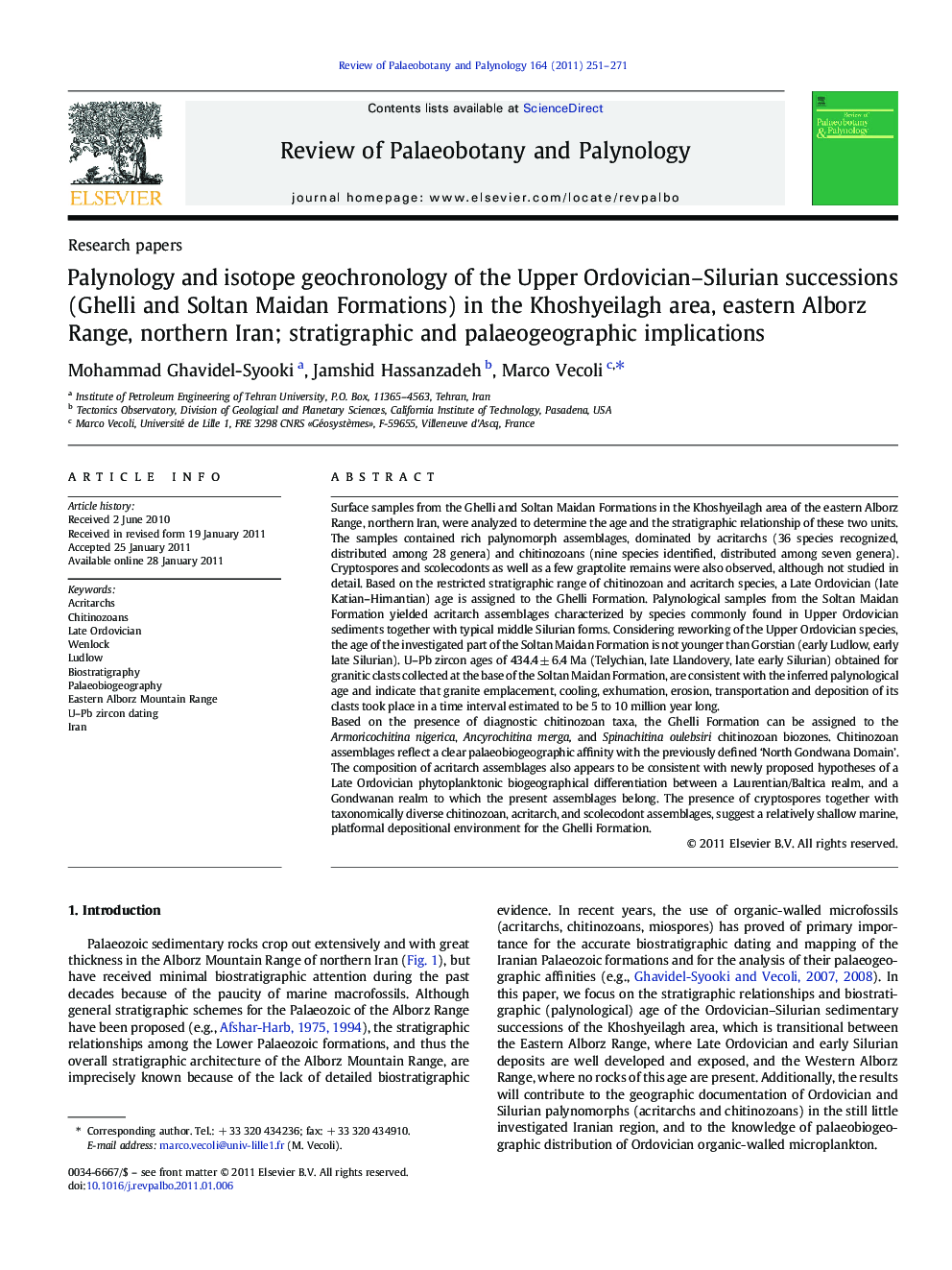| کد مقاله | کد نشریه | سال انتشار | مقاله انگلیسی | نسخه تمام متن |
|---|---|---|---|---|
| 4750548 | 1642536 | 2011 | 21 صفحه PDF | دانلود رایگان |

Surface samples from the Ghelli and Soltan Maidan Formations in the Khoshyeilagh area of the eastern Alborz Range, northern Iran, were analyzed to determine the age and the stratigraphic relationship of these two units. The samples contained rich palynomorph assemblages, dominated by acritarchs (36 species recognized, distributed among 28 genera) and chitinozoans (nine species identified, distributed among seven genera). Cryptospores and scolecodonts as well as a few graptolite remains were also observed, although not studied in detail. Based on the restricted stratigraphic range of chitinozoan and acritarch species, a Late Ordovician (late Katian–Hirnantian) age is assigned to the Ghelli Formation. Palynological samples from the Soltan Maidan Formation yielded acritarch assemblages characterized by species commonly found in Upper Ordovician sediments together with typical middle Silurian forms. Considering reworking of the Upper Ordovician species, the age of the investigated part of the Soltan Maidan Formation is not younger than Gorstian (early Ludlow, early late Silurian). U–Pb zircon ages of 434.4 ± 6.4 Ma (Telychian, late Llandovery, late early Silurian) obtained for granitic clasts collected at the base of the Soltan Maidan Formation, are consistent with the inferred palynological age and indicate that granite emplacement, cooling, exhumation, erosion, transportation and deposition of its clasts took place in a time interval estimated to be 5 to 10 million year long.Based on the presence of diagnostic chitinozoan taxa, the Ghelli Formation can be assigned to the Armoricochitina nigerica, Ancyrochitina merga, and Spinachitina oulebsiri chitinozoan biozones. Chitinozoan assemblages reflect a clear palaeobiogeographic affinity with the previously defined ‘North Gondwana Domain’. The composition of acritarch assemblages also appears to be consistent with newly proposed hypotheses of a Late Ordovician phytoplanktonic biogeographical differentiation between a Laurentian/Baltica realm, and a Gondwanan realm to which the present assemblages belong. The presence of cryptospores together with taxonomically diverse chitinozoan, acritarch, and scolecodont assemblages, suggest a relatively shallow marine, platformal depositional environment for the Ghelli Formation.
► Ghelli Formation is late Katian to Hirnantian in age at Khoshyeilagh, northern Iran.
► Soltan Maidan Formation is Gorstian (early Ludlow, early late Silurian) in age.
► Isotopic dating of Soltan Maidan granitic clasts indicates Telychian ages.
► Source of granitic clasts was a shallow pluton experiencing high exhumation rates.
► Acritarchs and chitinozoans indicate bioprovincialism in Hirnantian times
Journal: Review of Palaeobotany and Palynology - Volume 164, Issues 3–4, April 2011, Pages 251–271